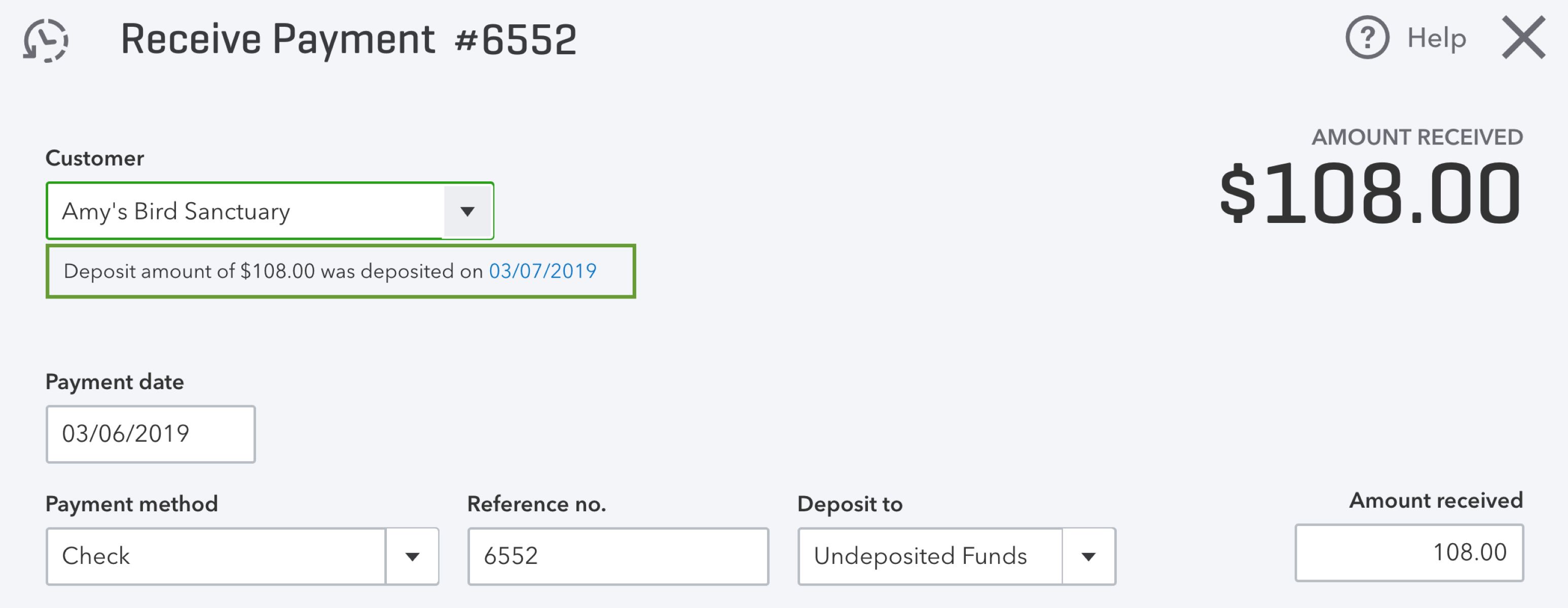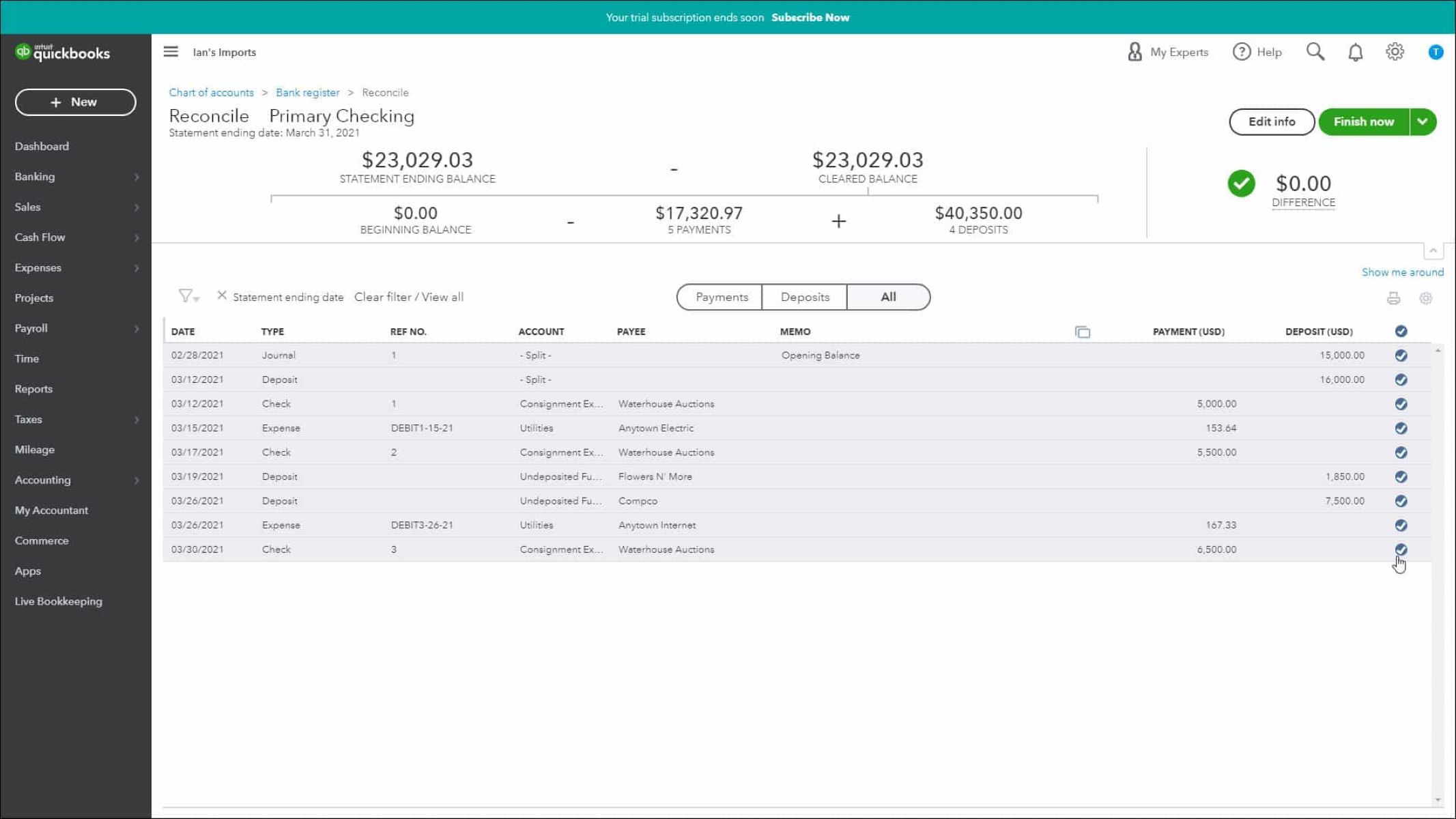Importing Lists into QuickBooks Online
If you’re transitioning your business to QuickBooks Online, it’s important to know how to import your lists into the software. Lists in QuickBooks Online refer to categories such as customers, vendors, products and services, chart of accounts, and employees. Importing these lists can save you time and effort, ensuring that your data is accurately transferred to the new platform.
1. Importing Customers into QuickBooks Online: If you have an existing customer database, you can easily import it into QuickBooks Online. Start by exporting your customer list in a supported file format, such as CSV or Excel. Then, navigate to the “Customers” section in QuickBooks Online and choose the “Import Customers” option. Follow the prompts to map the columns from your exported file to the corresponding fields in QuickBooks Online.
2. Importing Vendors into QuickBooks Online: Similarly, if you have a list of vendors that you want to import into QuickBooks Online, you can follow a similar process. Export your vendor list in a compatible format, navigate to the “Vendors” section in QuickBooks Online, and select “Import Vendors.” Map the columns from your exported file to the appropriate fields in QuickBooks Online to complete the import.
3. Importing Products and Services into QuickBooks Online: To import your product and service list, export it from your previous accounting software in a compatible format. In QuickBooks Online, go to the “Products and Services” section and choose “Import.” Follow the instructions to map the columns from your exported file to the respective fields in QuickBooks Online. This will allow you to quickly populate your product and service list in the new software.
4. Importing Chart of Accounts into QuickBooks Online: The chart of accounts is a vital component of your financial system. To import it into QuickBooks Online, export your chart of accounts from your previous accounting software in a supported format. In QuickBooks Online, navigate to the “Chart of Accounts” section and select “Import Chart of Accounts.” Map the columns from your exported file to the corresponding fields in QuickBooks Online to complete the import process.
5. Importing Employees into QuickBooks Online: If you have a list of employees that you need to import, export it from your previous system in a compatible format. In QuickBooks Online, go to the “Employees” section and choose “Import Employees.” Follow the instructions to map the columns from your exported file to the relevant fields in QuickBooks Online. This will allow you to easily bring in your employee list and their associated information.
6. Importing Other Lists into QuickBooks Online: In addition to the lists mentioned above, you can also import other types of lists into QuickBooks Online. This includes lists like classes, locations, and payment methods. The process for importing these lists is similar to the ones outlined above. Export the list from your previous system in a compatible format, navigate to the corresponding section in QuickBooks Online, and choose the import option. Follow the on-screen instructions to map the columns and complete the import.
By importing your lists into QuickBooks Online, you can ensure a smooth transition of your business data. This saves you from manually entering each entry, minimizing the chances of errors and saving valuable time. Make use of the import feature in QuickBooks Online to streamline your accounting processes and get up to speed with your new system more quickly.
Introduction
When running a business, keeping track of essential information is crucial for accurate accounting and financial management. QuickBooks Online is a popular cloud-based accounting software that provides users with a streamlined and efficient way to manage their finances. One of the key features of QuickBooks Online is the ability to import lists, which include categories such as customers, vendors, products and services, chart of accounts, and employees.
By importing lists into QuickBooks Online, you can save time and effort by avoiding manual entry of data. Whether you are migrating from another accounting software or starting fresh, importing lists ensures that your existing data is seamlessly integrated into QuickBooks Online. It allows you to maintain a consistent and up-to-date record of your business contacts, products or services offered, and financial accounts.
Importing your lists offers numerous benefits. Firstly, it eliminates the need for manual data entry, which can be time-consuming and prone to errors. By importing the lists, you can maintain accuracy and save valuable time that can be better spent growing your business.
Secondly, importing lists ensures consistency and avoids discrepancies. By bringing in your existing customer and vendor data, you can maintain a complete record of interactions, transactions, and payment histories. This helps in building better relationships with your customers and suppliers, as well as in making informed financial decisions.
Thirdly, importing lists allows for easier organization and categorization of data. QuickBooks Online provides intuitive tools to filter, sort, and search through your imported lists. This enhances efficiency and makes it simpler to retrieve specific information, generate reports, and analyze your business performance.
In this article, we will explore the process of importing different types of lists into QuickBooks Online. We will cover importing customers, vendors, products and services, chart of accounts, employees, and other types of lists. By following the step-by-step instructions, you will be able to seamlessly transfer your existing data into QuickBooks Online, saving time and ensuring accuracy in your financial management.
Now, let’s dive into the details of importing lists into QuickBooks Online and unlock the full potential of this powerful accounting software.
What are lists in QuickBooks Online?
In QuickBooks Online, lists refer to categories that help you organize and manage essential information about your business. These lists consist of various data sets that are integral to your accounting and financial operations. By understanding the different lists in QuickBooks Online, you can effectively categorize and track important details about your customers, vendors, products and services, chart of accounts, and employees.
Customers: The customer list in QuickBooks Online includes all the individuals or companies you do business with. Each entry in the customer list contains key details, such as contact information, billing addresses, payment terms, and transaction history. This list allows you to easily track and manage interactions, invoices, and payments from your customers.
Vendors: The vendor list includes all the suppliers, contractors, or service providers your business relies on. It captures important details about each vendor, such as contact information, payment terms, purchase orders, and payment history. This list allows you to efficiently manage your vendors, track expenses, and simplify the accounts payable process.
Products and Services: The products and services list contains information about the items you sell or the services you offer. Each entry in this list includes details such as item name, description, sales price, cost, and sales tax information. This list helps you keep track of your inventory, track sales, and generate accurate invoices.
Chart of Accounts: The chart of accounts is a fundamental aspect of your financial system. It categorizes your business transactions into different accounts, such as assets, liabilities, equity, revenue, and expenses. Each account in the chart of accounts has a unique name and a specific purpose, allowing you to accurately record and categorize your financial data.
Employees: The employee list includes details about individuals who work for your business. It captures information such as employee names, contact information, tax withholdings, payroll settings, and bank account details. This list is essential for managing employee payroll, generating payroll reports, and tracking employee-related expenses.
These lists are the building blocks of your accounting system in QuickBooks Online. They provide a structured way to organize, track, and manage important data about your customers, vendors, products and services, chart of accounts, and employees. By utilizing these lists effectively, you can streamline your financial processes and gain valuable insights into the performance of your business.
Benefits of Importing Lists into QuickBooks Online
Importing lists into QuickBooks Online offers numerous benefits for businesses of all sizes. By migrating your existing lists or starting fresh with imported data, you can optimize your accounting processes and enhance your overall financial management. Here are some key advantages of importing lists into QuickBooks Online:
Time-Saving: Importing your lists eliminates the need for manual entry, saving you valuable time and effort. Manually entering each customer, vendor, or product can be time-consuming, especially if you have a large database. By importing lists, you can quickly and accurately transfer your data into QuickBooks Online, allowing you to focus on other important aspects of your business.
Accuracy: Manual data entry is prone to errors, such as typos or duplicate entries. By importing your lists, you reduce the risk of data inaccuracies and ensure that your information is consistent and reliable. This helps maintain the integrity of your financial records and ensures that you make informed decisions based on accurate data.
Data Consistency: Importing lists allows you to maintain consistency across various aspects of your business. For example, by bringing in your customer and vendor lists, you can ensure that all interactions and transactions are accurately recorded and linked. This streamlines your accounting processes and enables you to easily track customer payments, vendor bills, and financial transactions.
Efficiency in Reporting and Analysis: With imported lists in QuickBooks Online, generating reports and analyzing your business performance becomes more efficient and insightful. By having complete and up-to-date information about your customers, vendors, products and services, and chart of accounts, you can generate customized reports to gain valuable insights into sales trends, expenses, and profitability. This helps you make data-driven decisions and identify areas for improvement.
Streamlined Workflows: Importing lists into QuickBooks Online allows for streamlined workflows and increased productivity. With all your essential information readily available, you can easily create invoices, manage bills, process payroll, and reconcile accounts. This saves time and reduces the chance of errors, freeing up resources that can be dedicated to growing your business.
Ease of Integration: Importing lists into QuickBooks Online ensures a seamless integration of your existing data with the software. You can easily bring in your customer and vendor details, product and service records, chart of accounts, and employee information. This smooth transition minimizes disruption and facilitates a quick start to using QuickBooks Online for your financial management.
By harnessing the benefits of importing lists in QuickBooks Online, you can enhance your accounting processes, save time, and gain valuable insights into the financial performance of your business. Whether you are migrating from another accounting software or starting fresh, importing lists sets you up for success in managing your finances effectively.
Importing Customers into QuickBooks Online
Importing your customer list into QuickBooks Online is a straightforward process that can save you valuable time and ensure the accuracy of your customer data. If you have an existing customer database in another software or a spreadsheet, you can easily import it into QuickBooks Online. Follow these steps to import your customers:
Step 1: Export your customer list: Start by exporting your customer list from your previous accounting software or spreadsheet in a compatible file format, such as CSV (Comma-Separated Values) or Excel. Ensure that the exported file includes all the necessary customer information, such as names, contact details, payment terms, and any other relevant details that you want to import into QuickBooks Online.
Step 2: Access the Import Customers Tool: Log in to your QuickBooks Online account and navigate to the “Customers” section. Here, you will find the option to import customers. Click on the “Import Customers” option to start the import process.
Step 3: Map the columns: QuickBooks Online will guide you through the process of mapping the columns from your exported file to the corresponding fields in QuickBooks Online. You will need to match the columns in the exported file to the appropriate fields in QuickBooks Online, such as customer name, email address, phone number, and payment terms. This ensures that the customer data is correctly imported into the relevant fields in QuickBooks Online.
Step 4: Review and import: After mapping the columns, QuickBooks Online will provide you with a preview of the data to be imported. Take the time to review the preview and ensure that the information is mapped correctly. If any adjustments are needed, you can go back and make the necessary changes. Once you are satisfied with the preview, click on the “Import” button to initiate the import process.
Step 5: Verify the imported customers: After the import is complete, QuickBooks Online will notify you of the success of the import. It is recommended to review the imported customers in QuickBooks Online to confirm that all the data has been imported accurately. Take a moment to verify customer names, contact details, payment terms, and any other relevant information that was imported from your exported file.
By following these steps, you can easily import your customer list into QuickBooks Online, ensuring a seamless transition of your customer data. Importing customers not only saves time but also allows you to have a comprehensive view of your customer interactions, invoices, and payment history. It streamlines your invoicing process and enables you to provide excellent customer service.
It’s important to note that the import process may vary slightly depending on your specific version of QuickBooks Online and the file format of your exported customer list. QuickBooks Online provides detailed instructions and resources to guide you through the import process, ensuring a smooth transition of your customer data.
Importing Vendors into QuickBooks Online
Importing your vendor list into QuickBooks Online is a simple and time-saving process that allows you to efficiently manage your supplier information. By importing vendors, you can ensure accuracy and streamline your accounts payable process. Follow these steps to import your vendors into QuickBooks Online:
Step 1: Export your vendor list: Begin by exporting your vendor list from your previous accounting software or spreadsheet in a compatible file format, such as CSV (Comma-Separated Values) or Excel. Make sure to include all relevant vendor information, such as names, contact details, payment terms, and any other important details that you want to import into QuickBooks Online.
Step 2: Access the Import Vendors Tool: Log in to your QuickBooks Online account and go to the “Vendors” section. Here, you will find the option to import vendors. Click on the “Import Vendors” option to start the import process.
Step 3: Map the columns: QuickBooks Online will guide you through mapping the columns from your exported file to the corresponding fields in QuickBooks Online. Match the columns in the exported file to the appropriate fields in QuickBooks Online, such as vendor name, contact information, payment terms, and any other relevant details. This ensures that the vendor data is accurately imported into the corresponding fields in QuickBooks Online.
Step 4: Review and import: After mapping the columns, QuickBooks Online will provide a preview of the imported data. Take the time to review the preview and ensure the information is mapped correctly. If any adjustments are necessary, you can go back and make the required changes. Once you are satisfied with the preview, click on the “Import” button to initiate the import process.
Step 5: Verify the imported vendors: Once the import is complete, QuickBooks Online will notify you of the successful import. It is essential to review the imported vendors in QuickBooks Online to confirm the accuracy of the imported data. Verify vendor names, contact details, payment terms, and any other pertinent information that was imported from your exported file.
By following these steps, you can easily import your vendor list into QuickBooks Online, ensuring a smooth transition of your vendor data. Importing vendors saves time and allows you to maintain a comprehensive record of your suppliers, contact information, payment terms, and transaction history. It streamlines your accounts payable process and allows for better management of expenses.
It is worth noting that the import process may vary slightly depending on your specific version of QuickBooks Online and the file format of your exported vendor list. QuickBooks Online provides detailed guidance and resources to help you through the import process, ensuring a seamless transfer of your vendor data.
Importing Products and Services into QuickBooks Online
QuickBooks Online allows you to import your product and service list, saving you time and ensuring the accuracy of your inventory and sales records. By importing products and services, you can quickly populate your list and streamline your invoicing and sales processes. Here’s how you can import your products and services into QuickBooks Online:
Step 1: Export your product and service list: Start by exporting your product and service list from your previous accounting software or spreadsheet in a compatible file format, such as CSV (Comma-Separated Values) or Excel. Make sure to include all the necessary information, such as item names, descriptions, prices, costs, and tax details.
Step 2: Access the Import Products and Services Tool: Log in to your QuickBooks Online account and navigate to the “Products and Services” section. Here, you will find the option to import products and services. Click on the “Import” button to start the import process.
Step 3: Map the columns: QuickBooks Online will guide you through mapping the columns from your exported file to the corresponding fields in QuickBooks Online. Match the columns in the exported file to the appropriate fields in QuickBooks Online, such as item name, description, price, cost, and tax details. This ensures that the product and service data is correctly imported into the respective fields in QuickBooks Online.
Step 4: Review and import: After mapping the columns, QuickBooks Online will provide a preview of the imported data. Take the time to review the preview and ensure the information is mapped correctly. If any adjustments are needed, you can go back and make the necessary changes. Once satisfied with the preview, click on the “Import” button to initiate the import process.
Step 5: Verify the imported products and services: Once the import is complete, QuickBooks Online will notify you of the successful import. It is essential to review the imported products and services in QuickBooks Online to ensure the accuracy of the imported data. Verify item names, descriptions, prices, costs, and tax details that were imported from your exported file.
By following these steps, you can easily import your product and service list into QuickBooks Online, ensuring a smooth transition of your inventory and sales data. Importing products and services saves time and allows you to efficiently manage your inventory, track sales, and generate accurate invoices.
It’s important to note that the import process may vary slightly depending on your specific version of QuickBooks Online and the file format of your exported product and service list. QuickBooks Online provides detailed instructions and resources to guide you through the import process, ensuring a seamless transfer of your product and service data.
Importing Chart of Accounts into QuickBooks Online
The chart of accounts is a crucial component of your financial system, and importing it into QuickBooks Online ensures accurate categorization and tracking of your business transactions. By importing your chart of accounts, you can quickly set up your accounting records and streamline your financial management. Follow these steps to import your chart of accounts into QuickBooks Online:
Step 1: Export your chart of accounts: Begin by exporting your chart of accounts from your previous accounting software or spreadsheet in a compatible file format, such as CSV (Comma-Separated Values) or Excel. Ensure that the exported file includes all necessary account details, such as account names, numbers, types, and balances.
Step 2: Access the Import Chart of Accounts Tool: Log in to your QuickBooks Online account and navigate to the “Chart of Accounts” section. Here, you will find the option to import your chart of accounts. Click on the “Import” button to start the import process.
Step 3: Map the columns: QuickBooks Online will guide you through mapping the columns from your exported file to the corresponding fields in QuickBooks Online. Match the columns in the exported file to the appropriate fields in QuickBooks Online, such as account name, number, account type, and balance. This ensures that the chart of accounts data is correctly imported into the relevant fields in QuickBooks Online.
Step 4: Review and import: After mapping the columns, QuickBooks Online will provide a preview of the imported data. Take the time to review the preview and ensure the information is mapped correctly. If any adjustments are necessary, you can go back and make the required changes. Once you are satisfied with the preview, click on the “Import” button to initiate the import process.
Step 5: Verify the imported chart of accounts: Once the import is complete, QuickBooks Online will notify you of the successful import. It is crucial to review the imported chart of accounts in QuickBooks Online to confirm the accuracy of the imported data. Verify account names, numbers, types, and balances that were imported from your exported file.
By following these steps, you can easily import your chart of accounts into QuickBooks Online, ensuring a seamless transfer of your financial records. Importing the chart of accounts saves time and helps you maintain accurate categorization and tracking of your business transactions. It allows you to generate financial statements, analyze your business performance, and make informed financial decisions.
Please note that the import process may vary slightly depending on your specific version of QuickBooks Online and the file format of your exported chart of accounts. QuickBooks Online provides detailed instructions and resources to guide you through the import process, ensuring a smooth transition of your chart of accounts.
Importing Employees into QuickBooks Online
Importing your employee list into QuickBooks Online allows you to efficiently manage your payroll and employee-related information. By importing employees, you can streamline your payroll processes and ensure accuracy in recording employee details. Follow these steps to import your employees into QuickBooks Online:
Step 1: Export your employee list: Begin by exporting your employee list from your previous HR or payroll system in a compatible file format, such as CSV (Comma-Separated Values) or Excel. Make sure to include all the necessary employee information, such as names, contact details, tax withholdings, payroll settings, and any other relevant details that you want to import into QuickBooks Online.
Step 2: Access the Import Employees Tool: Log in to your QuickBooks Online account and navigate to the “Employees” section. Here, you will find the option to import employees. Click on the “Import” button to start the import process.
Step 3: Map the columns: QuickBooks Online will guide you through mapping the columns from your exported file to the corresponding fields in QuickBooks Online. Match the columns in the exported file to the appropriate fields in QuickBooks Online, such as employee name, contact information, tax withholdings, payroll settings, and bank account details. This ensures that the employee data is correctly imported into the relevant fields in QuickBooks Online.
Step 4: Review and import: After mapping the columns, QuickBooks Online will provide a preview of the imported data. Take the time to review the preview and ensure the information is mapped correctly. If any adjustments are needed, you can go back and make the necessary changes. Once you are satisfied with the preview, click on the “Import” button to initiate the import process.
Step 5: Verify the imported employees: Once the import is complete, QuickBooks Online will notify you of the successful import. It is important to review the imported employees in QuickBooks Online to confirm the accuracy of the imported data. Verify employee names, contact details, tax withholdings, payroll settings, and bank account details that were imported from your exported file.
By following these steps, you can easily import your employee list into QuickBooks Online, ensuring a smooth transfer of your employee data. Importing employees saves time and allows you to efficiently manage payroll, generate payroll reports, and track employee-related expenses. It provides a streamlined way to handle employee information in QuickBooks Online.
Keep in mind that the import process may vary slightly depending on your specific version of QuickBooks Online and the file format of your exported employee list. QuickBooks Online provides detailed instructions and resources to guide you through the import process, ensuring a seamless transition of your employee data.
Importing Other Lists into QuickBooks Online
QuickBooks Online allows you to import various other types of lists to further enhance your business management capabilities. These lists include classes, locations, payment methods, and more. By importing these lists, you can easily organize and track specific details relevant to your business operations. Here’s how you can import these other lists into QuickBooks Online:
Step 1: Export the other list: Start by exporting the specific list you want to import from your previous accounting software or spreadsheet in a compatible file format, such as CSV (Comma-Separated Values) or Excel. Ensure that the exported file includes all the necessary information related to the specific list, such as class names, location details, or payment method options.
Step 2: Access the Import Tool: Log in to your QuickBooks Online account and navigate to the corresponding section where you want to import the specific list. For example, if you want to import classes, go to the “Classes” section. Look for the “Import” button or option related to the specific list and click on it to start the import process.
Step 3: Map the columns (if applicable): QuickBooks Online may guide you through mapping the columns from your exported file to the corresponding fields in QuickBooks Online. Match the columns in the exported file to the appropriate fields in QuickBooks Online, such as class names, location addresses, or payment method options. This ensures that the imported data is correctly placed in QuickBooks Online.
Step 4: Review and import: After mapping the columns (if applicable), QuickBooks Online will display a preview of the imported data. Take the time to review the preview and ensure the information is accurately mapped. If any adjustments are necessary, you can go back and make the required changes. Once you are satisfied with the preview, click on the “Import” button to initiate the import process.
Step 5: Verify the imported list: Once the import is complete, QuickBooks Online will notify you of the successful import. It is important to review the imported list in QuickBooks Online to validate the accuracy of the imported data. Verify the names, details, or options that were imported from your exported file.
By following these steps, you can import various other lists into QuickBooks Online, allowing for better organization and management of specific aspects of your business. This includes categorizing transactions based on classes, tracking revenue and expenses by different locations, or having specific payment methods readily available for customer payments. Importing other lists in QuickBooks Online saves time and ensures that your business operations are efficiently categorized and recorded.
Please note that the import process may vary slightly depending on your specific version of QuickBooks Online and the file format of your exported other list. QuickBooks Online provides detailed instructions and resources to guide you through the import process for these specific lists, ensuring a seamless transfer of your data.
Conclusion
Importing lists into QuickBooks Online is a crucial step in transitioning to the cloud-based accounting software. Whether you’re importing customers, vendors, products and services, chart of accounts, employees, or other lists, this process saves time and ensures the accuracy of your data. By following the steps outlined in this article, you can seamlessly transfer your existing records and streamline your financial management.
The benefits of importing lists into QuickBooks Online are significant. It saves time by eliminating the need for manual data entry and reduces the likelihood of errors. Importing lists also maintains consistency across different aspects of your business, allowing for better organization and analysis of data. The efficiency gained from importing lists enables you to generate customized reports, make informed decisions, and accelerate your business growth.
When importing customers, vendors, products and services, chart of accounts, employees, or other lists, it is important to export the data from your previous software or spreadsheets in a compatible format. QuickBooks Online provides easy-to-use tools for mapping the columns from your exported file to the corresponding fields in the software. Review the preview of the imported data, verify the accuracy of the information, and make any necessary adjustments before completing the import process.
It is worth noting that the import process may vary slightly depending on your specific version of QuickBooks Online and the file format of your exported lists. QuickBooks Online offers detailed instructions and resources to guide you through the import process and ensure a smooth transition of your data.
By effectively importing lists into QuickBooks Online, you can unlock the full potential of the software and optimize your financial management. Take advantage of this powerful feature to save time, improve accuracy, and gain valuable insights into the performance of your business. Whether you’re starting fresh with a new company or transitioning from another accounting system, importing lists in QuickBooks Online sets the foundation for efficient and successful financial management.

























